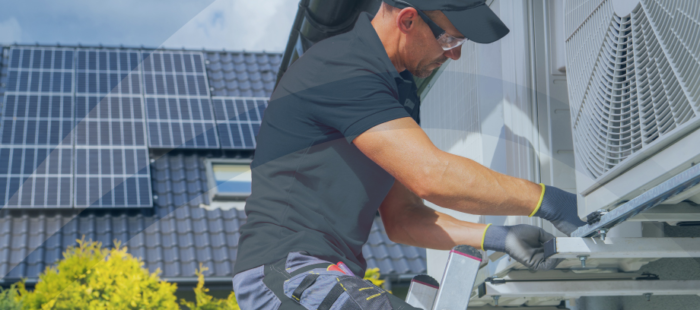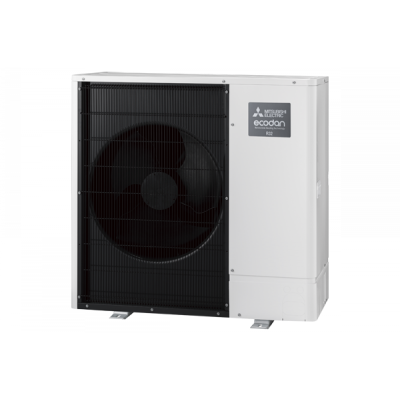
Air Source Heat Pumps: How Noisy Are They?
Well, not really, as it happens! If you’ve kept in touch with any of the discussion online about the latest renewable technologies, air source heating will no doubt have been linked with excessive audible noise pollution. However, those who have spent time in the company of a heat pump in an outdoor setting will likely debunk this, as it is mostly untrue.
One common description, in basic terms, of how an air source heat pump works, is that it is like a backwards fridge i.e., a heat pump takes cool external air and heats it up using a compression process, passing it across a heat exchanger into the central heating system. This basic description also translates across relatively well to the noise level associated with the unit. If you imagine the noise created by a standard fridge freezer, there would be few complaints. Transfer this to an outdoor setting, and you’re very close to the experience that you get with an air source heat pump unit. In general terms, the noise can be described as a low hum, and without standing directly in front of the unit, this will almost certainly be masked by any additional background noise in the area.
Not content to stand still, the renewable heating industry is trying to make the systems even more user friendly and less open to criticism. Manufacturers are actively addressing the call for quieter installations and, as such, pushing for lower dB levels from their external units. As an example, our manufacturing partners Mitsubishi released their Ultra Quiet model for the 8.5kW and 11.2kW variants, which has a decibel level of 45 dB(A) at 1m away from the fan. To put this into context, this is 5dB less than a quiet office or a library, and only 5dB more than light rain, which we are more than familiar with in the UK!
It's important to note that each heat pump will go through a legionella cycle once a week, for an hour, where the circuits are flushed with water above 60 degrees. At this point the heat pump will create more noise, but the timing of the cycle can be programmed so as to be less of a nuisance to the client
So, what does this all mean for the average homeowner and, maybe more importantly, their neighbours? To answer this, we need to look at the Permitted Development rights, which state that, to escape the need for planning permission, a heat pump must comply with the following conditions related to noise:
- The installation must comprise a single outdoor unit only
- The installation must comply with MCS 020
- There must not be a wind turbine on the property
- The heat pump must only be used for space heating and hot water
There are other conditions in the list, but these are related to aesthetics and visibility rather than noise. The important point to note is the MCS regulation 020, which states that noise levels must stay below 42dB at one metre distance away from any habitable room of a neighbouring property, where a habitable room is anything other than a shower room, bathroom, WC or kitchen. In general terms, if the air source heat pump is pointing into a neighbouring building, the distance between the fan output and the closest neighbouring living area window or door needs to be calculated. There are also allowances for noise reduction due to obstructions such as boundary fences and walls etc.
In real terms, given the consistent reduction in output with each new heat pump that makes its way onto the market, and the MCS 020 procedure described above, it is highly unlikely that any single unit air source heat pump installation will be in breach of noise regulations.
When it comes down to consumer comfort, every individual is different in the way that they react to noise, and installation companies should be encouraged to demonstrate previous installations to clients before signing them up. A short visit to a local install could be the difference between a client taking the plunge or deciding to walk away because of what they’ve read on social media.

Learn more about Mitsubishi’s Ultra Quiet range at the following link :
Mitsubishi Electric Air Source Heat Pumps

 Learn more about Mitsubishi’s Ultra Quiet range at the following link :
Mitsubishi Electric Air Source Heat Pumps
Learn more about Mitsubishi’s Ultra Quiet range at the following link :
Mitsubishi Electric Air Source Heat Pumps 